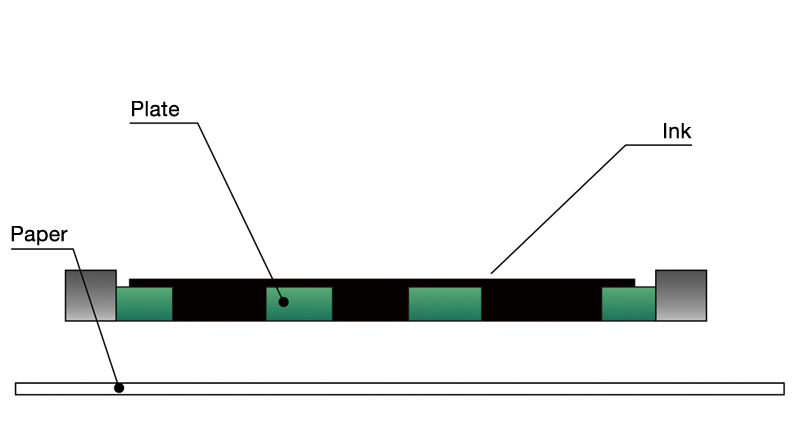Stencil
孔版
Kōhan
CATEGORIES
Stencil is a printing format that involves a process of creating a stencil-plate with holes to make an image, covering the template with ink, and applying pressure to push the ink through the holes in the plate, thereby transferring the image to the support medium below the plate.
Artists use various techniques associated with this printing format. One is screen printing, in which the artist makes a stencil-plate from a screen mounted onto a metal frame and prints the image by pushing ink through the holes. Another is stencil (or kappa-ban), where the artist uses a template to print an image onto a support medium. There is also mimeograph (or gari-han), in which the artist drags a file over wax paper to make holes and then print with a roller.
Stencil differs most from the other printmaking formats-relief, intaglio, and planography-in that the image of the work is not inverted. Another characteristic of stencil is that the artist does not need to apply high pressure to transfer ink to the support medium, and the support medium remains undamaged; this allows the artist to use many plates and overprint inks. Artists can thus make images with irregular surfaces, as can be seen in thick paintings. Stencils are also compatible with water- and oil-based inks. Because there are few constraints on support media caused by ink, stencil printing lends itself to a broad range of applications. Paper is a common support medium, but artists can also use a variety of materials such as cloth, wood, glass, and metal and print in large quantities. This has led to industrial and commercial improvements in stencil printing and widespread adoption across many disciplines.
Around 20,000 BC, the Aborigines used a stencil-like method to paint pigments using a reed stalk onto stone cave walls in the form (plate) of their hands. It is said that a pottery template for dyeing cloth existed in India two thousand years ago. In Japan, paper templates called bingata are used the same way in dyeing. The principles of the stencil method have been applied from time immemorial. Screen printing was devised in the 19th century in France and Germany. In the 20th century, screen printing technology was developed in the United Kingdom, followed by its commercial development in the United States. Artists began using screen printing to produce artwork in the late 1930s. Photoengraving was developed in the 1940s as a result of World War II. It was around this time that screen printing-based artwork became known as serigraphy, differentiated from industrial printing, which led to the production of many works of art.
 A plate filled with ink
A plate filled with ink A printed image
A printed image
